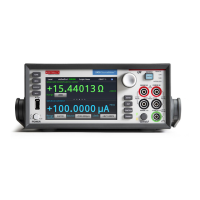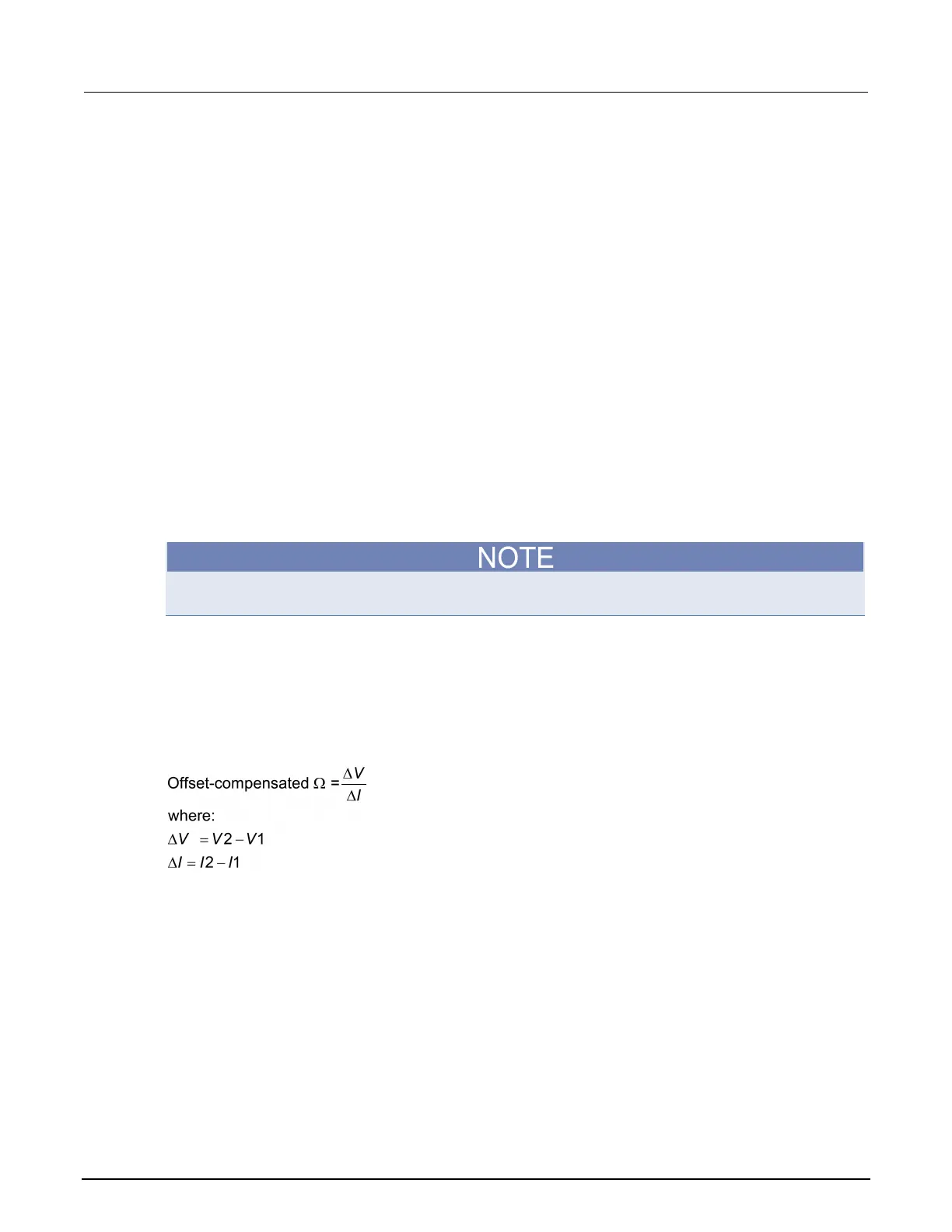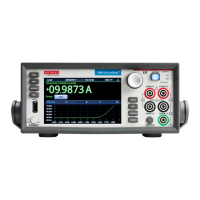4: Source-measure considerations Model 2450 Interactive SourceMeter® Instrument
4-20 2450-901-01 Rev. B/September 2013
Calculating measurement accuracy
To calculate measurement accuracy, use the formula:
Accuracy = ± (% of reading + offset)
For example, to calculate the voltage measurement accuracy, assume:
• Input signal = (20 Ω * 100 mA) = 2 V
• Accuracy specification of 2 V range = ± (0.012% of output + 300 µV)
You calculate the current source accuracy as shown in the following equations.
Error (∆V)
= ±(% of reading) + offset
= ± {(2 V * 0.00012) + 300 µV}
= ± {240 µV + 300 µV}
µ
Offset-compensated ohm calculations
The presence of thermal EMFs (V
EMF
) can adversely affect low-resistance measurement accuracy. To
overcome these offset voltages, you can use offset-compensated ohms.
Instrument operations, including offset-compensated ohms, are performed on the input signal in a
sequential manner.
For a normal resistance measurement, the Model 2450 sources a current (I) and measures the
voltage (V). The resistance (R) is then calculated as (R=V/I) and the reading is displayed.
For offset-compensated ohms, two measurements are performed: one normal resistance
measurement, and one using the lowest current source setting.
The offset-compensated ohms reading is then calculated as follows:
V1 is the voltage measurement with the current source at its normal level.
V2 is the voltage measurement using the lowest current source setting.
I1 is the current measurement with the source set to a specific level.
I2 is the current measurement with the source set to zero.
This 2-point measurement process and reading calculation eliminates the resistance contributed by
the presence of V
EMF
.
When the source is turned on, the output cycles between the programmed value and zero (0 A or
0 V) to derive the offset-compensated ohms measurement.

